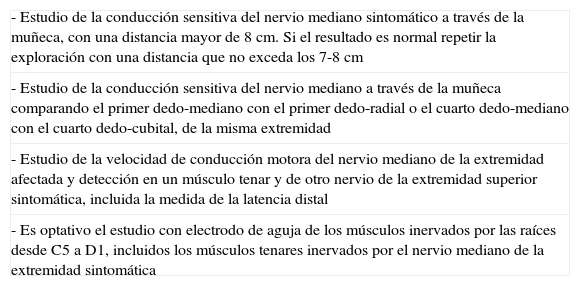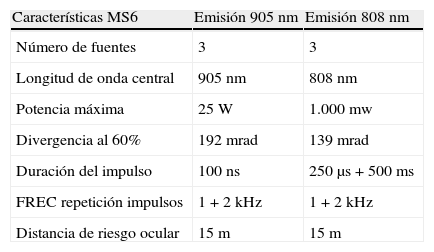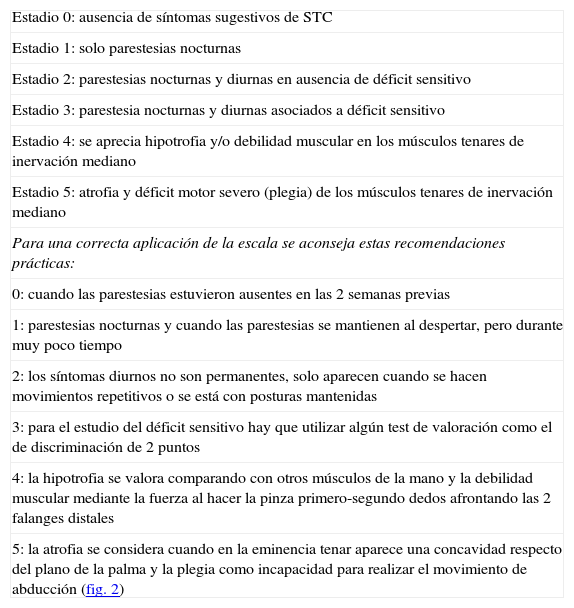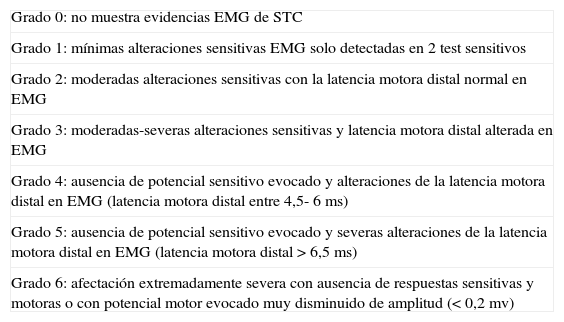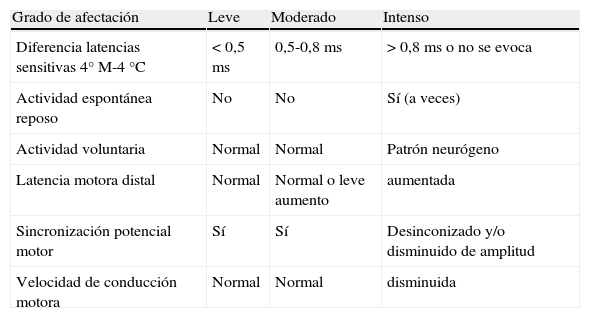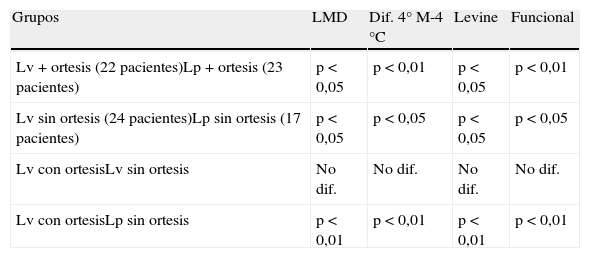Valorar la incidencia por sexos en el síndrome del túnel del carpo (STC); la evolución en los tratados con láser verdadero (Lv) frente a los tratados con láser placebo (Lp) ambas sin ortesis; evolución de las muñecas tratadas con Lv + ortesis, respecto de las tratadas con Lv sin ortesis, y evolución de las muñecas tratadas con Lv + ortesis frente a las tratadas con Lp sin ortesis.
Material y métodoSe seleccionaron 49 pacientes con STC con afectación leve o moderada, tratados con láser de 808 y 905nm y 25W de potencia pico, asociado en 15 pacientes a ortesis de mano más afectada; en 12 pacientes en ambas manos, y en 22 pacientes sin ortesis. Energía total suministrada/sesión: 915J/cm2 sobre área de 4×4cm2.
Análisis estadísticoPrograma SPSS 15.0. de la t de Student, con valores significativos para p<0,05, corroboradas con las pruebas de los rangos con signos de Wilcoxon.
ResultadosLa incidencia fue muy superior en mujeres (93,5%).
En los pacientes con ortesis hay diferencias significativas en todos los valores tratados con Lv frente a los tratados con Lp. Cuando no se utilizaron ortesis las diferencias fueron significativas entre los tratados con Lv frente alos tratados con Lp.
En pacientes tratados con Lv y ortesis frente a los tratados con Lv sin ortesis, no hubo diferencias significativas.
Comparando los pacientes tratados con Lv y ortesis frente a los tratados con Lp sin ortesis hay diferencias muy significativas a favor de los primeros.
No hay diferencias significativas entre los valores obtenidos entre el primero y tercero mes del tratamiento.
ConclusionesEl tratamiento con láser en pacientes con STC es más eficaz que el grupo placebo, hasta 3 meses después de finalizado el tratamiento. La utilización de ortesis y láser no es más eficaz que el láser solo.
To evaluate incidence by gender in the carpal tunnel syndrome (CTS), the evolution in those treated with real laser (rL) versus those treated with placebo laser (pL), both groups without orthesis; evolution of wrist treated with rL plus orthosis versus those treated with rL without orthosis and evolution of wrist treated with rL + orthosis versus those treated with pL without orthosis.
Materials and methodsA total of 49 patients with CTS with mild or moderate involvement were selected. They were treated with laser 808 and 905nm and 25W peak power. In 15 patients, treatment was associated to orthesis in the most affected hand. In 12 patients, both hands were affected and orthosis was not used in 22. Total energy applied/session was 915J/cm2 on an area of 4×4cm2.
Statistical analysisThe SPSS 15.0, Student's T test was used, with significant values for P<.05, corroborated with the Wilcoxon rank sum test.
ResultsThe incidence was much higher in women (93.5%).
In patients with orthosis, there are significant differences in all the values in the laser-treated subjects versus the placebo-laser treated ones. When orthesis was not used, there were significant differences between those treated with real laser versus those treated with placebo.
In patients treated with laser and orthesis versus those treated with laser without orthesis, no significant differences were found.
When patients treated with laser plus orthesis were compared with those treated with pL without orthesis, very significant differences were found in favor of the former.
There are no significant differences between the values obtained at the first and third month of treatment.
ConclusionsTreatment with laser in CTS patients is more effective than placebo up to three months after the treatment has been completed. The use of orthotic devices and laser is no more effective than the use of laser alone.










